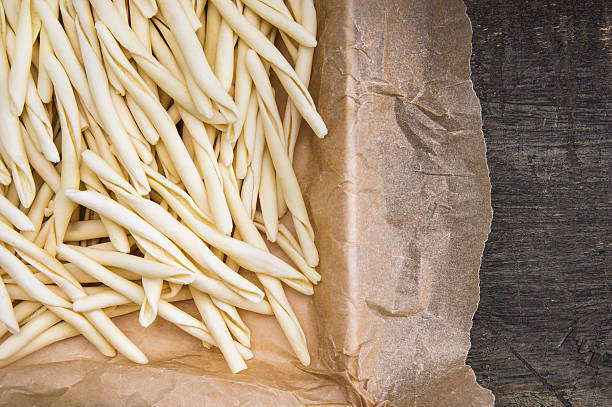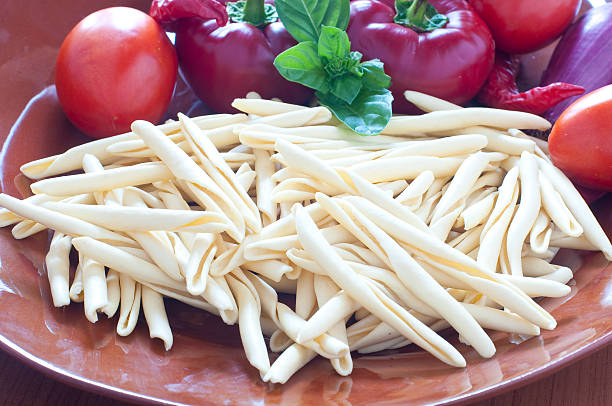Fileja

The south of Italy is famed for giving its pasta unusual shapes, such as orecchiette, which is formed like a human ear. Fileja originates in Italy's southern Calabria area and has a swirly form that resembles an extended screw. Fileja, which is around three to four millimeters thick, is nearly generally produced fresh at home rather than purchased dry from a store.
A dough of wheat flour, salt, and water is shaped into strings of little ropes no more than three inches in length to form fileja. The dough rope is then pushed onto a short metal rod known as danaco or dinacolo, which is rolled several times until the fileja takes shape. After removing the stick from the dough, the fileja is tossed in a sauce. Fileja is traditionally served on Sundays and holidays in Calabria, soaked in a tomato or minced pig sauce. When freshly rolled, fileja pairs nicely with meaty, heavy, and spicy sauces, particularly those prepared with spicy 'Nduja sausage from Calabria.



















